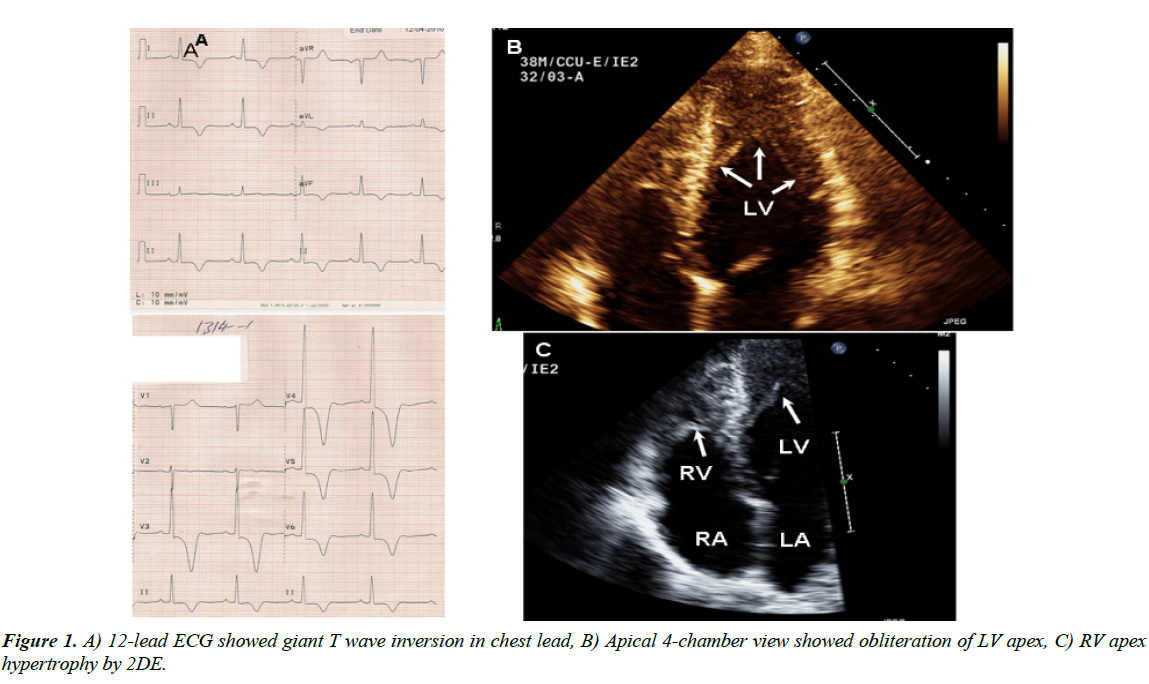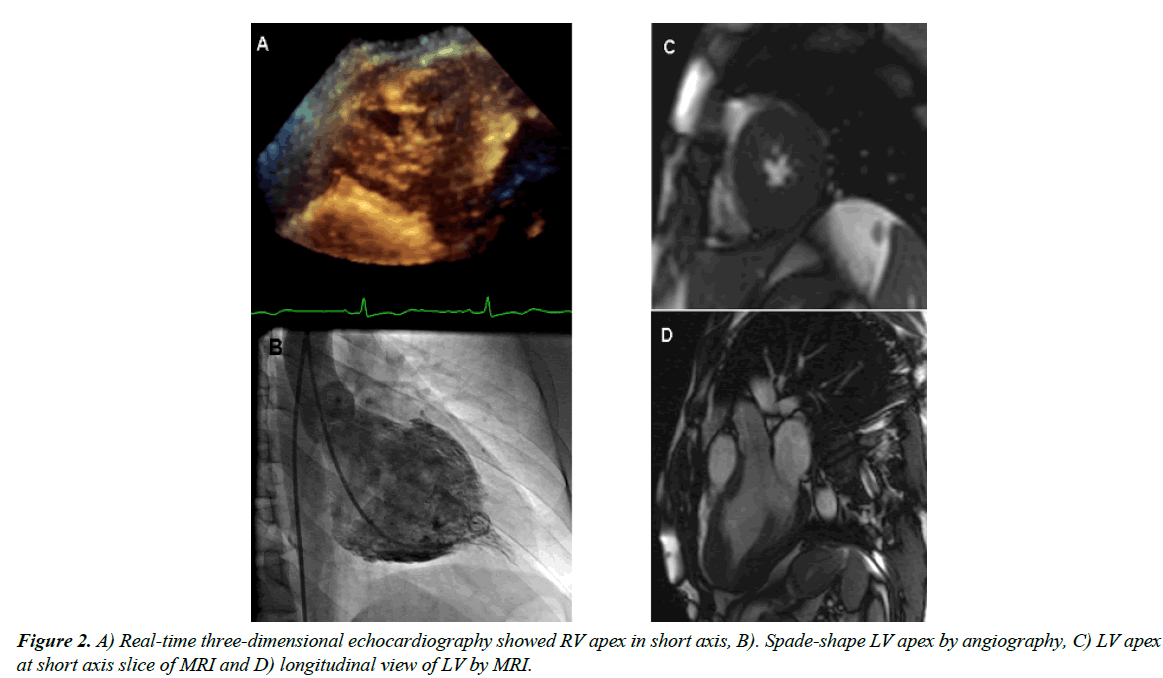Image Article - Journal of Cardiovascular Medicine and Therapeutics (2017) Volume 1, Issue 3
Syncope during military exercise: A case of apical hypertrophic cardiomyopathy in a Saudi soldier.
Fayez Bokhari*, Ibrahim Al-Naser, Aref Ajam, Ashraf Anwar
Department of Cardiology, King Fahd Armed Forces Hospital, Jeddah, Kingdom of Saudi Arabia
- *Corresponding Author:
- Dr. Fayez Bokhari MD
Department of Cardiology
King Fahd Armed Forces Hospital
P.O. Box: 9862, Jeddah 21159,
Kingdom of Saudi Arabia
Tel: +966 12 232 8888
Fax: +966-2-6651868
E-mail: fayezabokhari@yahoo.com
Accepted date: December 29, 2017
Citation: Bokhari F, Al-Naser I, Ajam A, et al. Syncope during military exercise: A case of apical hypertrophic cardiomyopathy in a Saudi soldier. J Cardiovasc Med Ther. 2017;1(3):6-7.
Abstract
Apical hypertrophic cardiomyopathy (HCM) constituted about 25% of all cases of HCM in Japan and much less often (1% to 2%) in non-Japanese populations. The primary hypertrophy is localized in the left ventricular apex. Apical HCM patients tend to have mild symptoms. Palpitations and exercise induced syncope should prompt further evaluation of atrial and ventricular arrhythmias.
Clinical Image
Apical hypertrophic cardiomyopathy (HCM) constituted about 25% of all cases of HCM in Japan and much less often (1% to 2%) in non-Japanese populations. The primary hypertrophy is localized in the left ventricular apex. Apical HCM patients tend to have mild symptoms. Palpitations and exercise induced syncope should prompt further evaluation of atrial and ventricular arrhythmias. We Presents here a 39-year-old Saudi male soldier who had gradual progressive exertional dyspnea few years. Recently he developed two episodes of exertional syncope without prodrome during military exercise. He had no family history of sudden cardiac death. Clinical examination and lab investigations were normal. ECG showed giant T wave inversion across the precordial leads. Two-dimensional echocardiography demonstrated an asymmetric hypertrophy of LV apex with suspicion of RV involvement. No left ventricular outflow tract obstruction and mild mitral regurgitation. Realtime 3-dimensional echocardiography showed severely hypertrophied apex of both ventricles with complete obliteration as clarified with contrast-enhanced real-time 3-dimensional echocardiography. Cardiac catheterization showed normal coronaries. Left ventriculography showed spade- shaped with cavity obliteration at end-diastole up to 3.0 cm from the apex with no pullback gradient across the outflow tract. Cardiac magnetic resonance imaging confirmed apical hypertrophy of both ventricles with almost complete systolic obliteration of apical cavity. Wall thickness of the hypertrophied muscle is 2 cm while the rest of myocardium is around 1 cm. 24-hours Holter monitor study was normal. Electro-physiologic study showed easily inducible monomorphic ventricular tachycardia requiring shock. Therefore, dual chamber (Implantable Cardioverter Defibrillator) ICD was implanted for prevention of sudden cardiac death (Figures 1 and 2).

